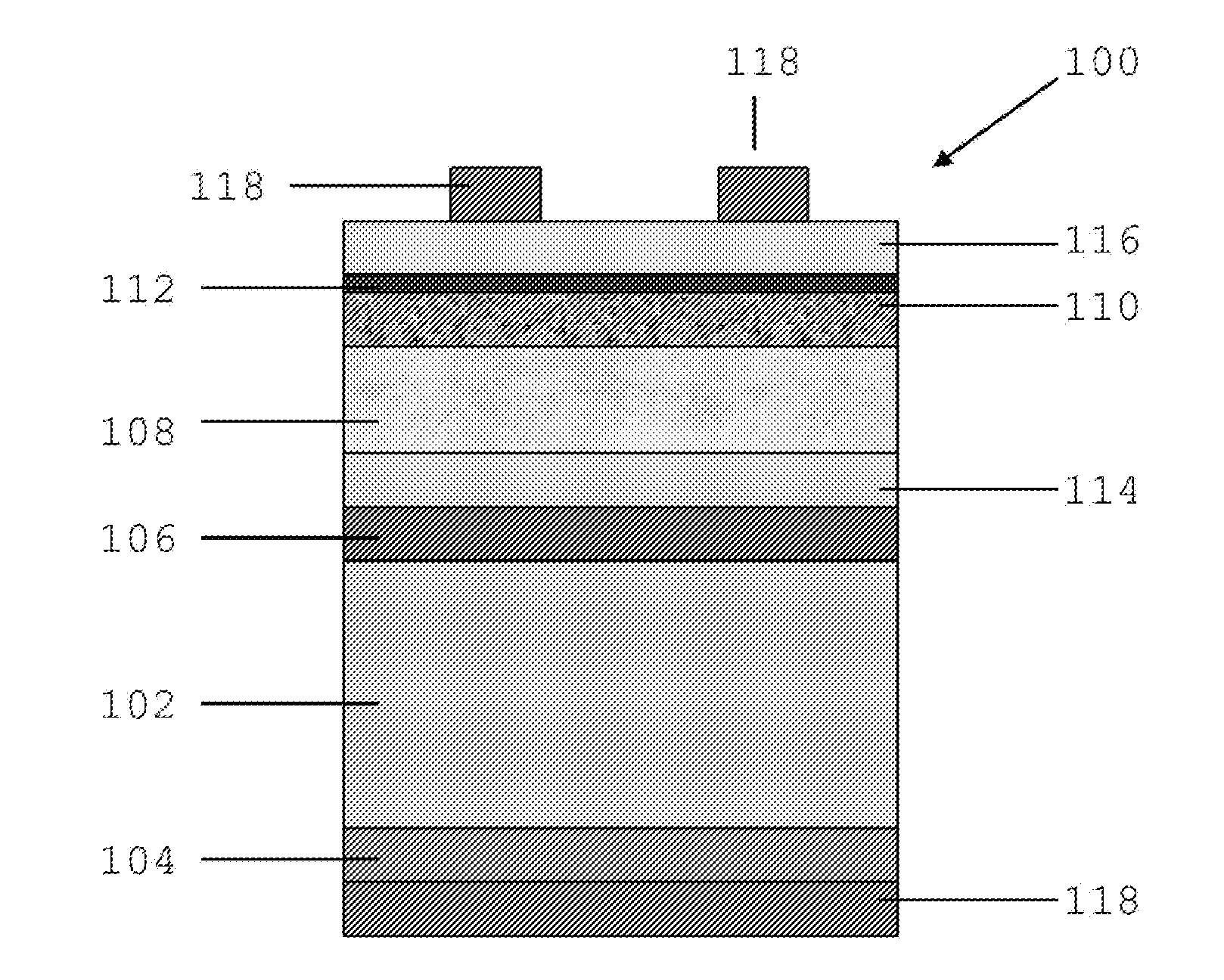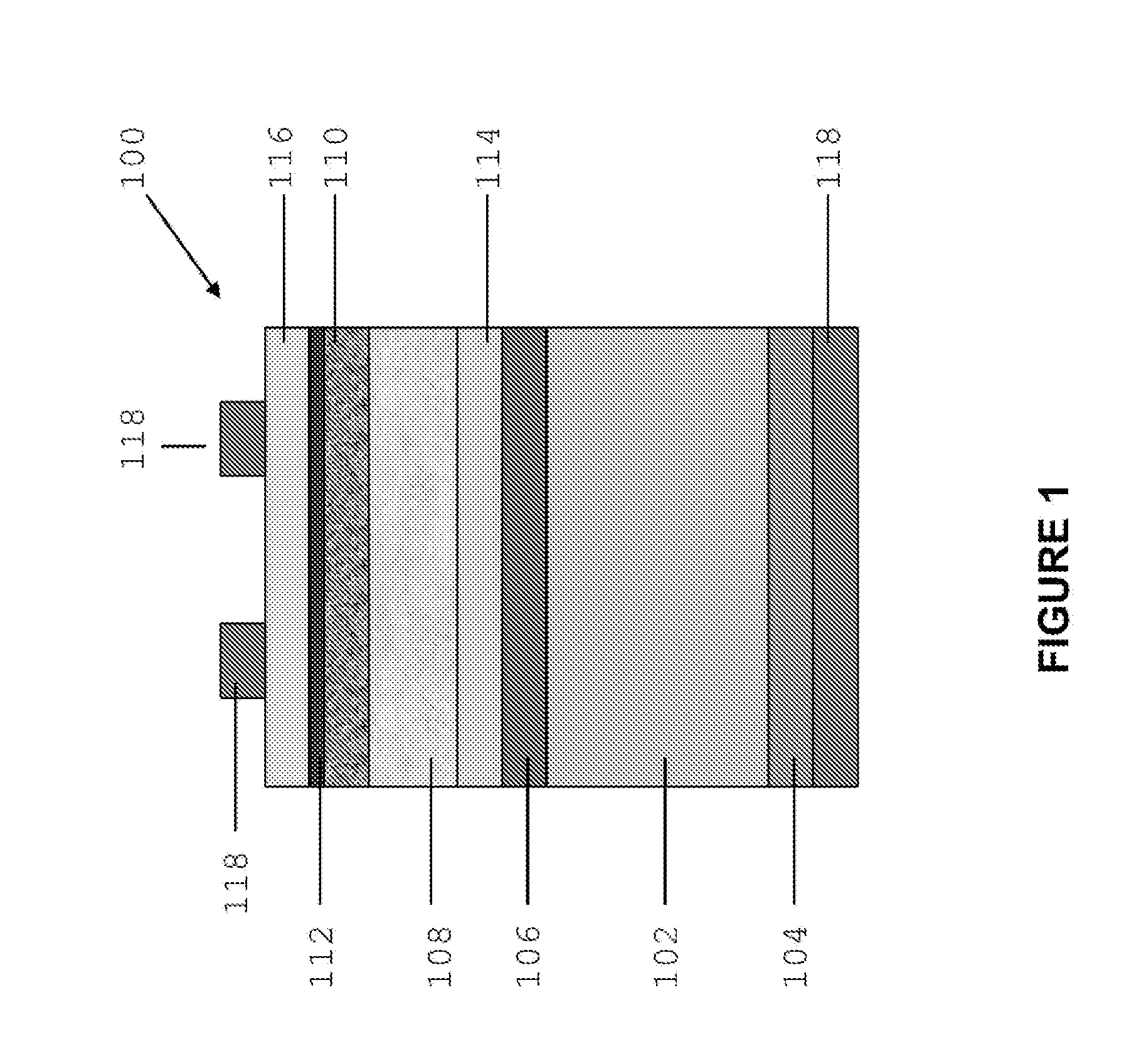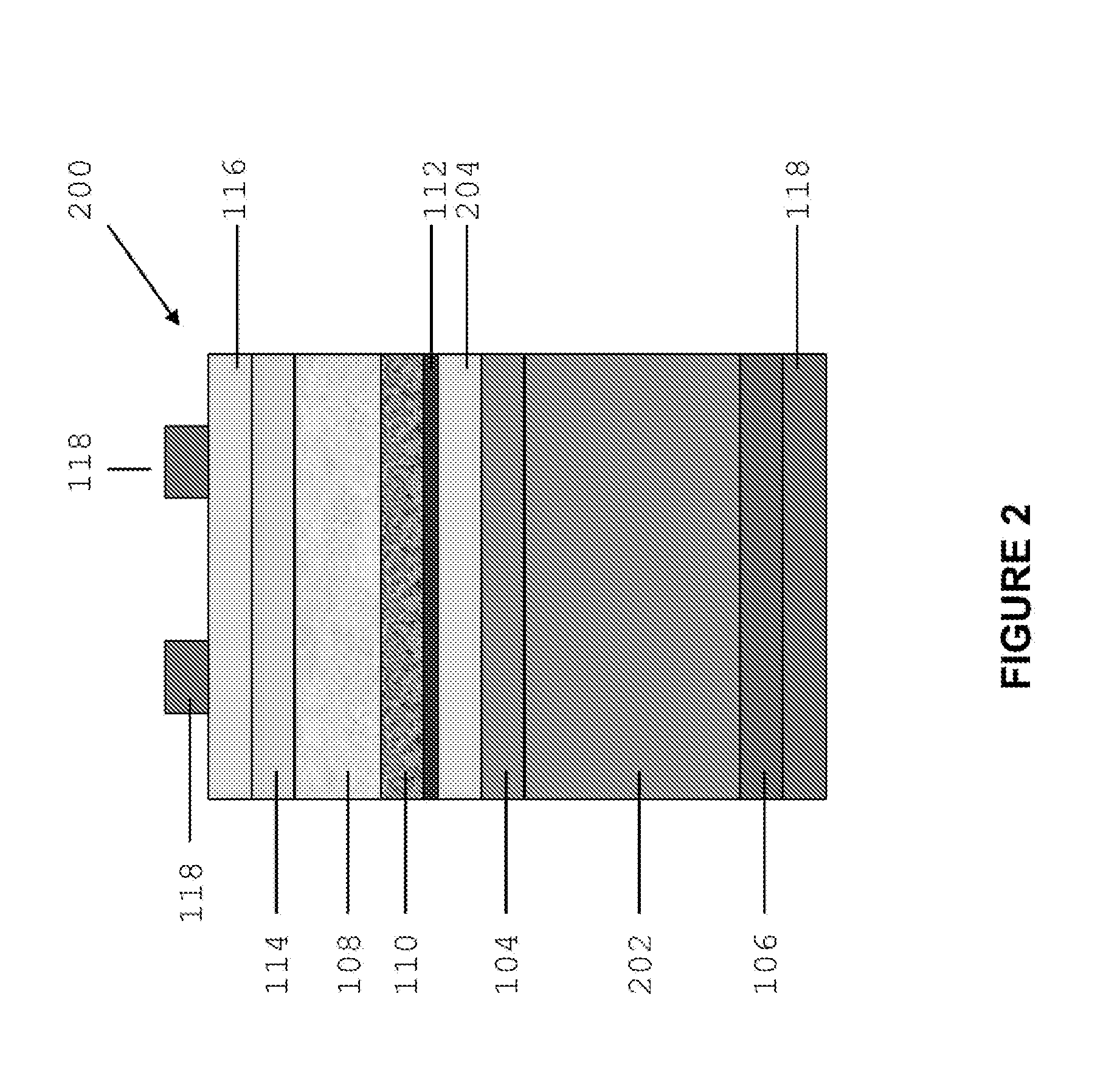A high efficiency stacked solar cell
- Summary
- Abstract
- Description
- Claims
- Application Information
AI Technical Summary
Benefits of technology
Problems solved by technology
Method used
Image
Examples
Embodiment Construction
[0046]Embodiments of the present invention relate to high efficiency photovoltaic devices consisting of a series of solar cells stacked on top of each other. In particular, advantageous embodiments of the invention are related to a photovoltaic device consisting of a one of more thin films solar cells that include absorber materials with a Perovskite structure and are stacked on top of silicon single junction solar cell. In one embodiment, the device is configured as a tandem solar cell with a single homojunction silicon bottom cell and a thin film solid state Perovskite-based top cell. In these embodiments, the single homojunction cell comprises a silicon p-n junction which may be realised, for example, by diffusion of n-type dopants in a p-type silicon substrate or vice versa. Alternatively, the p-n junction may be realised using ion-implantation or epitaxy.
[0047]The single homojunction silicon bottom cell may be a single-crystalline cell realised on a crystalline silicon wafer. T...
PUM
 Login to View More
Login to View More Abstract
Description
Claims
Application Information
 Login to View More
Login to View More - R&D
- Intellectual Property
- Life Sciences
- Materials
- Tech Scout
- Unparalleled Data Quality
- Higher Quality Content
- 60% Fewer Hallucinations
Browse by: Latest US Patents, China's latest patents, Technical Efficacy Thesaurus, Application Domain, Technology Topic, Popular Technical Reports.
© 2025 PatSnap. All rights reserved.Legal|Privacy policy|Modern Slavery Act Transparency Statement|Sitemap|About US| Contact US: help@patsnap.com



